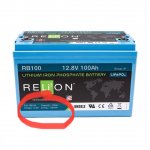stevensmith91
Full Member
- Messages
- 60
Ok looking for some advice , I’m collecting my new Pilote Motorhome in two weeks time and have asked the dealer to fit a lithium battery
also fitting an inverter so I can run my 600 watt microwave occasionally for a maximum 3-4 minutes
I have a 2000 watt Renogy pure sine wave inverter what would be the minimum amperage Lithium battery I would need
also fitting an inverter so I can run my 600 watt microwave occasionally for a maximum 3-4 minutes
I have a 2000 watt Renogy pure sine wave inverter what would be the minimum amperage Lithium battery I would need


